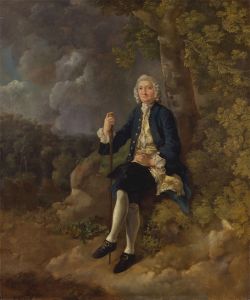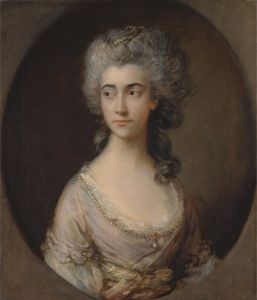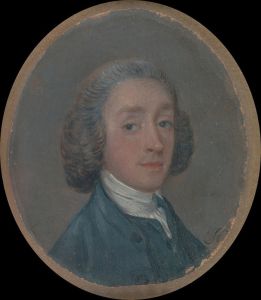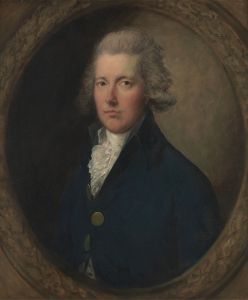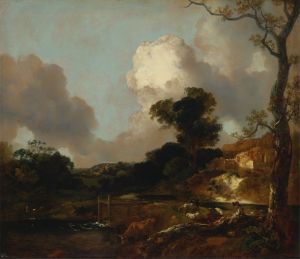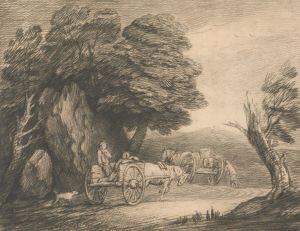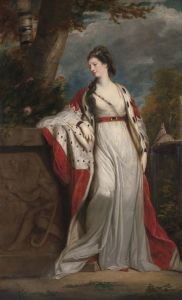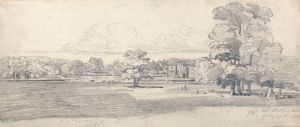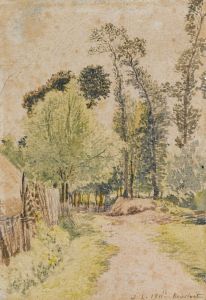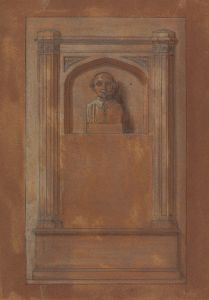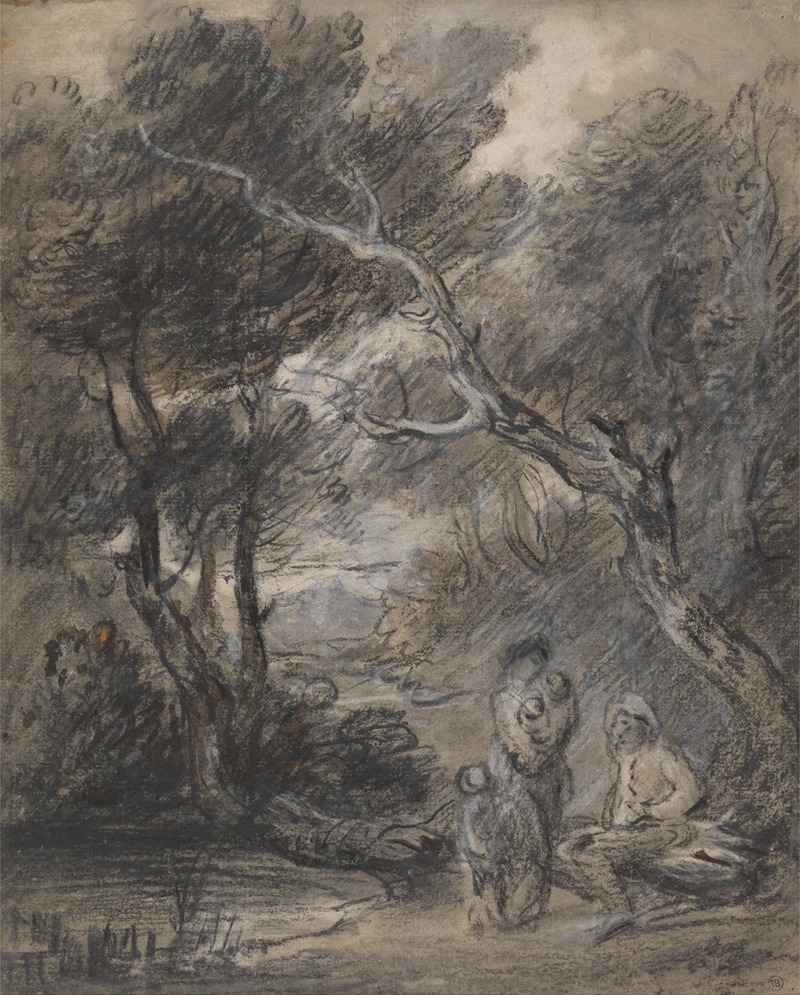
Wooded Landscape with Figures
A hand-painted replica of Thomas Gainsborough’s masterpiece Wooded Landscape with Figures, meticulously crafted by professional artists to capture the true essence of the original. Each piece is created with museum-quality canvas and rare mineral pigments, carefully painted by experienced artists with delicate brushstrokes and rich, layered colors to perfectly recreate the texture of the original artwork. Unlike machine-printed reproductions, this hand-painted version brings the painting to life, infused with the artist’s emotions and skill in every stroke. Whether for personal collection or home decoration, it instantly elevates the artistic atmosphere of any space.
Thomas Gainsborough's "Wooded Landscape with Figures" is a notable work by the renowned 18th-century British painter, who is celebrated for his contributions to landscape and portrait painting. Gainsborough, born in 1727 in Sudbury, Suffolk, was a founding member of the Royal Academy and is often remembered alongside contemporaries such as Sir Joshua Reynolds. His work is characterized by a distinctive style that combines a keen observation of nature with a romantic sensibility.
"Wooded Landscape with Figures" exemplifies Gainsborough's skill in capturing the serene beauty of the English countryside. Although specific details about the creation date and the exact location depicted in this painting are not well-documented, it is consistent with Gainsborough's broader body of work from the mid to late 18th century, which often features rural scenes infused with a sense of tranquility and harmony.
The painting typically showcases a lush, verdant landscape, with trees dominating the composition. Gainsborough's use of light and shadow creates a dynamic interplay that adds depth and movement to the scene. His brushwork is both fluid and expressive, capturing the textures of foliage and the play of light across the landscape. This technique reflects his admiration for the Dutch landscape painters of the 17th century, such as Jacob van Ruisdael, while also incorporating his unique artistic vision.
Figures in Gainsborough's landscapes are often secondary to the natural setting, serving to enhance the scale and atmosphere of the scene. In "Wooded Landscape with Figures," the human presence is typically understated, with small figures engaged in leisurely activities or simply traversing the landscape. This approach underscores the harmony between humanity and nature, a recurring theme in Gainsborough's work.
Gainsborough's landscapes were not mere representations of specific locations but rather idealized visions of nature. He often painted from memory or imagination, creating compositions that conveyed an emotional response to the natural world. This method allowed him to infuse his landscapes with a sense of poetic beauty, making them more than just topographical records.
"Wooded Landscape with Figures" reflects Gainsborough's broader artistic philosophy, which prioritized mood and atmosphere over precise detail. His landscapes are celebrated for their ability to evoke a sense of peace and contemplation, inviting viewers to immerse themselves in the depicted scene.
Throughout his career, Gainsborough's landscapes were highly regarded, although he often expressed a preference for portraiture due to its greater financial rewards. Nevertheless, his landscapes have endured as some of his most beloved works, appreciated for their technical mastery and emotive power.
Today, Gainsborough's "Wooded Landscape with Figures" is recognized as an important example of 18th-century British landscape painting. It continues to be studied and admired for its artistic qualities and its contribution to the development of landscape art in Britain. Gainsborough's work laid the groundwork for future generations of landscape artists, influencing figures such as John Constable and J.M.W. Turner, who further advanced the genre in the 19th century.





